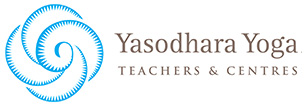In Kundalini Yoga for the West (p 321) Swami Radha writes in the chapter titled “Different Pathways for the Aspirant”: . . . In writing I have tried to steer a middle course for the aspirant who is a householder, a career person: those individuals who want to pursue higher value in life without abandoning the pursuit of worldly interests . . .” And Swami Radha states in Yoga: A Path to Awareness: You can dedicate everything you do to the Most High, and bring the greatest quality possible into your life.
1) I Am Functioning from my Centre (Kundalini Yoga for the West, p 154)
Doing this exercise ten times, even once a day, will bring a good reminder on other occasions when the aspirant may be off-centre, that it is possible to return to the centre at any time it is so decided.
Practise lifting up the emotions to the heart centre. Start by standing, and hold the hands palm up just above the navel. Smoothly lift the hands up to the heart centre as if lifting the emotions up to the heart. Then extend the arms out full length, forming a circle as you bring the hands back down to the area above the navel. Walk around the room in a circle, making this circular movement with the arms. As you do so, say, “I am functioning from my centre.” The reinforcement of hearing this repeated aloud is very effective.
2) Mantras – Words of Power
In truth the Guru dwells in your heart. The Guru is ever by our side. You have only to think of him with real Bhava and you will at once feel his spiritual presence without fail. (Mantras: Words of Power, p 150, early edition)
The Mantras presented in the first section of this chapter are Mantras of the heart, used as short formulas to bring about single-pointedness of mind for the purpose of achieving Self-Realization. (p 63)
Chant one of the following mantras with the associated phrase in mind. Ask yourself:
- What is the pathway to my heart and what are the obstacles?
a) AUM (p 66)
. . . Swami Sivananda has said that in this kind of self-surrender, which comes from the very core of one’s heart, spiritual practice of sadhana is not necessary, because one has truly become the Lord’s property, the flute of Lord Krishna.
b) Krishna Invocation (p 67)
This Mantra is a devotional fire that consumes the emotional dross, brings the heart to pure longing, the mind to stillness, and the soul to peace.
c) Radhe Govinda (p 68)
. . . The story of this Mantra, like the Krishna Invocation, displays an understanding of human nature and an acceptance of it as the vehicle through which we reach the Divine.
d) Om Tara (p 69)
Tara means ‘star.’ For thousands of years, ships have been navigated at night by using the stars. Tara is the guiding star showing the way to the other shore.
Mantra Practice – The Mala
For the busy Western person especially, the practice of the mala has therapeutic value because of its effects of concentrating the mind, directing the emotions, and focusing the body, all of which lead to the spiritual realm. (p 34)
… The mala should be worn around the neck with mount Meru in front. Wearing the mala reminds you of your purpose in life, to realize God, the Self, because you feel it when you move in all your daily activities. Place it under your pillow or on your altar at night. (p 35)
Observe the practice of wearing your mala every day, or placing it under your pillow at night.
3) Hatha Yoga – The Hidden Language
a) Dhanurasana – The Bow (p 107)
The bow has many uses besides sending the arrow to its target. The bow of a saw is under similar stress when at work. But the delicacy of the bow of the violin, and its peculiar use, shows the great complexity and enormous variety of human functions.
It takes great effort to assess the many targets that are available, the variety of tensions that have to be imposed on the bow, and the different aims for the arrow. The purpose of the arrow is to fly straight and true to the target. The purpose of the bow also needs clear definition. One is useless without the other. And what is the target? Is there a target, a large one, in the distance, with many intermediate ones along the way? Is the main target well-defined, clear? What is represented by the concentric circles of a target?
Practice the Bow pose and ask yourself:
- What is it in my life that is heartfelt, and how do I get there? How can I be of service?
b) Hamsasana – The Swan (p 196)
Because of the goose’s chatter, it was believed that language started with this bird. Refining the use of language and clarifying the meaning of words is an important art of the spiritual path.
Practice the Swan Pose and ask yourself:
- How do I create my world through the movement of my mind?
- What knowledge do I gain through Hamsasana or hamsa breath?
- Hamsa Breath (p 199):
Hamsa is a swan. Ham and Sa also represent the in-breath and out- breath. The rhythm of life is breath – inhalation, exhalation; expansion, contraction. Practice of the ham-sa breath will establish a rhythm in harmony with the rhythm of all the life force around you.
Exhale—mentally repeat Ham. Inhale—mentally repeat Sa.
Repeat this for a few minutes and then reverse, mentally saying Sa (or So) on exhalation and Ham on inhalation.
The meaning of Sa-ham is “I am She,” So-ham is “I am He.” Bring the quality of perfect union into the swan pose.
c) Matsyasana – The Fish (p 135)
Watching fish swim in water, one becomes aware of their constant restless movements as they seek food for nourishment. People also seek nourishment, primarily of an emotional type until they begin to understand, through the practice of the asana, that unconsciously they may really be seeking spiritual nourishment.
Practice the Fish Pose and ask yourself:
- What does it mean to have my heart elevated in the highest position. What feelings arise?
Go further in the Fish practicing the “I Am Functioning From My Centre” exercise first.
4) Divine Mother Prayer
O Divine Mother,
May all my speech and idle talk be mantra,
All actions of my hands be mudra,
All eating and drinking be the offering of oblations unto Thee,
All lying down prostrations before Thee.
May all pleasures be as dedicating my entire self unto Thee.
May everything I do be taken as Thy worship.
- Take time to repeat the Divine Mother Prayer a number of times.
- Reflect on how each of the acts, in your daily life, can create a pathway to your heart (speech, eating (or feeding others), drinking, etc.)
5) Kundalini Yoga For the West – The Heart Lotus: Fourth Cakra (Touch)
Here in the Heart Lotus we must investigate the sense of touch…
I touch. The act of touching. What is touched? (p 175)
Swami Radha invites us to reflect on the following questions regarding touch (p 176):
- When you say that something touches your heart, what do you mean by this?
- What does it mean to be touched by a smile or a look of understanding?
- Think of being touched by sunshine. In what ways?
- Prana touches every part of your body and moves around within it. What does this mean to you?
- The hands are the part of the body most used for touching. Hands build and hands destroy. Can this be related to touch and feelings?
- How can touch be a pathway to my heart centre and what are the obstacles?
6) Kundalini Yoga For the West – Thoughts on Reverence for Life (pp 218 – 220)
Swami Radha challenges us to consider our connection to all that sustains us by using the example of saying grace before a meal.
Open your eyes, and uncover the food. Can you give thanks with true feeling? As you eat, bring awareness to the gifts of life that are sustaining you. If you use your body as an instrument for your search for the Most High, all life that has been killed in the process of nourishing you will benefit from the vibration of holy thoughts. (pp 219 – 220)
- Reflect on how your daily activities can create pathways to your heart.


Comments are closed.